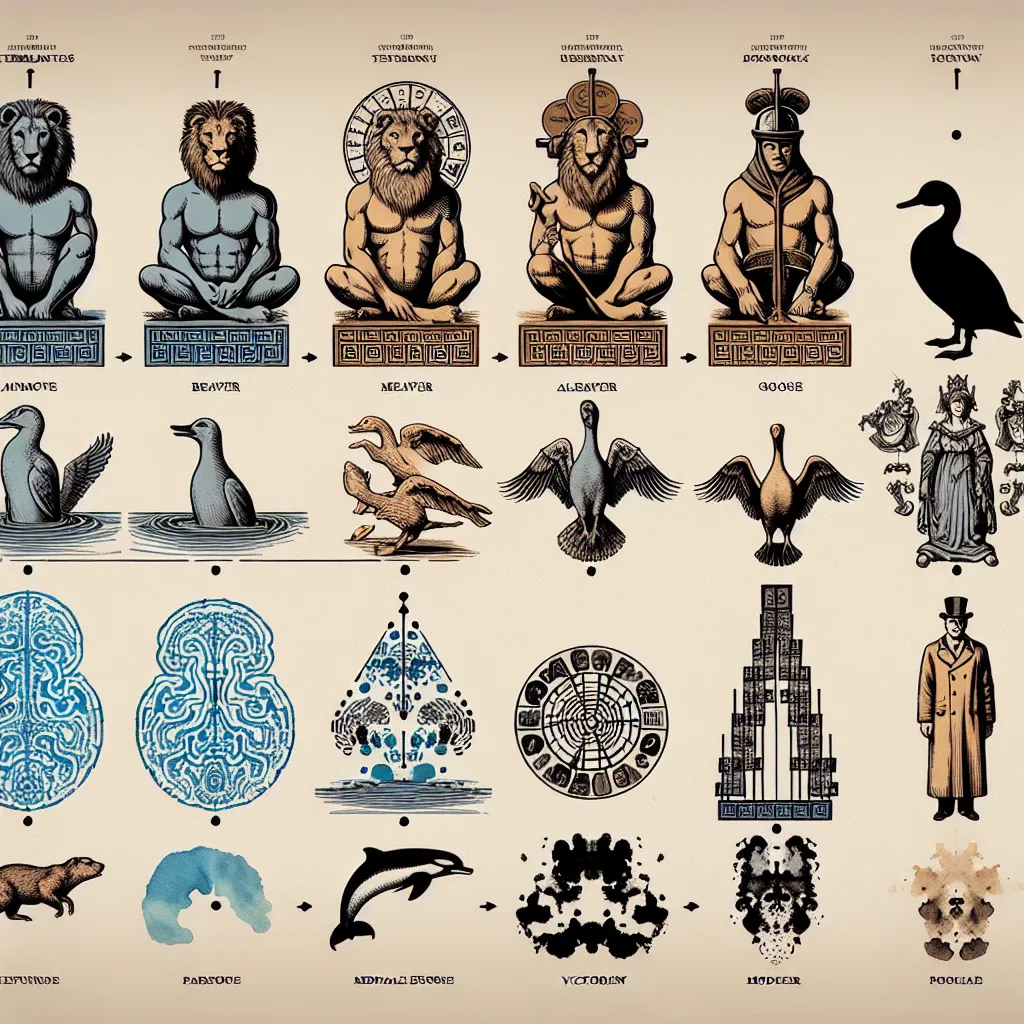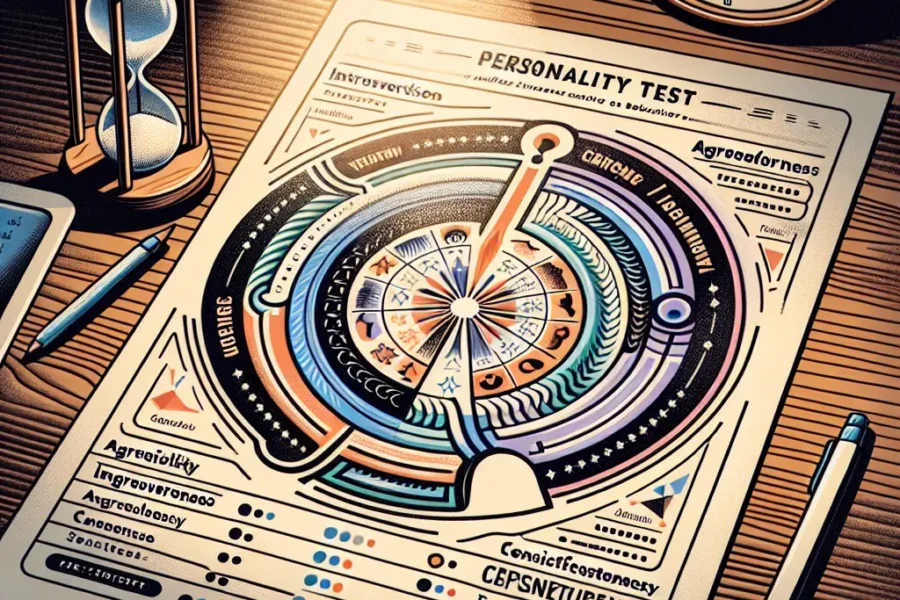Personality Tests in Historical Context: A Journey Through Time
The quest to understand human personality has been a fascinating endeavor that has spanned across centuries, cultures, and continents. From the philosophical musings of the ancient Greeks to the sophisticated assessments of modern psychologists, personality tests have evolved significantly. This journey through time reveals the depth of human curiosity and the ever-evolving approaches to understanding the intricate tapestry of human behavior, traits, and motivations.
The story of personality tests begins in ancient times when philosophers like Hippocrates and Galen proposed the concept of the four temperaments. They believed that human personalities were a result of the balance of bodily fluids or humors: blood, phlegm, yellow bile, and black bile. These humors were said to correlate with four distinct temperaments: sanguine, phlegmatic, choleric, and melancholic. For centuries, this concept influenced how people thought about behavior and individual differences.
As we leap forward to the Middle Ages, astrology played a significant role in personality assessment. Astrologers posited that an individual’s character and fate were influenced by the position of the stars and planets at the time of birth. Although widely discredited today, horoscopes were once considered a genuine method to decipher personality traits and predict an individual’s path in life.
The Renaissance era brought with it a renewed interest in the human psyche, but it was not until the 18th and 19th centuries that more empirical approaches to personality began to surface. One of the forerunners in the field was Franz Joseph Gall, who pioneered the pseudoscience of phrenology, which suggested that one could determine personality from the shape and bumps of the skull. Despite its eventual debunking, phrenology was groundbreaking as it introduced the idea of linking physiology with psychological attributes.
Moving forward to the 20th century, the field of psychology began to mature, and with it came the development of more scientific personality tests. The introduction of the first personality questionnaire by Sir Francis Galton in the 19th century paved the way for future advancements. Galton’s work was a precursor to the later creation of the Woodworth Personal Data Sheet during World War I, which was designed to screen recruits for shell shock.
In the roaring twenties, psychologist Carl Jung introduced his theory of psychological types, which inspired the famous Myers-Briggs Type Indicator (MBTI). Developed by Katharine Cook Briggs and her daughter Isabel Briggs Myers, the MBTI remains one of the most popular personality tests today. It is based on four dichotomies — Extraversion vs. Introversion, Sensing vs. Intuition, Thinking vs. Feeling, and Judging vs. Perceiving — and classifies individuals into one of sixteen personality types.
The mid-20th century saw the advent of projective tests like the Rorschach inkblot test and the Thematic Apperception Test (TAT), which sought to delve into the unconscious mind. The inkblot test, developed by Hermann Rorschach, required individuals to describe what they saw in a series of ambiguous inkblots, on the premise that their interpretations would reveal underlying aspects of their personality.
Meanwhile, the TAT, created by Henry A. Murray, involved showing individuals a series of vague images and asking them to tell a story about each one. The belief was that the stories would reflect the subjects’ personal motivations, conflicts, and way of seeing the world. While projective tests have been subject to criticism regarding their reliability and validity, they have remained influential in clinical settings.
In contrast to projective tests, objective tests like the Minnesota Multiphasic Personality Inventory (MMPI) emerged, utilizing a standardized set of questions with a fixed set of responses. Developed in the late 1930s by Starke R. Hathaway and J.C. McKinley, the MMPI went on to become one of the most widely used and researched personality assessments. It originally aimed to diagnose psychiatric disorders, but it also gleaned insights into various personality attributes.
The latter half of the 20th century also witnessed the rise of the Five Factor Model, or the Big Five, which posits that personality consists of five broad dimensions: openness to experience, conscientiousness, extraversion, agreeableness, and neuroticism. This model, supported by a wealth of empirical research, has become a cornerstone of personality psychology. Instruments like the NEO Personality Inventory have become key tools for psychologists using this framework.
The digital age has influenced the accessibility and method of delivery for personality assessments. From online versions of the MBTI to new tests popping up on social media, the fascination with understanding the self and others has not waned. Advancements in technology have also led to more sophisticated tools, such as computerized adaptive testing, which tailors questions to the respondent’s previous answers, increasing both efficiency and accuracy.
Additionally, with the rise of artificial intelligence and machine learning, personality assessment is poised to reach unprecedented levels of personalization and predictive power. Algorithms are being developed to analyze language patterns, facial expressions, and even social media behavior to draw inferences about an individual’s personality.
Despite the myriad of advancements and changes in understanding personality across history, the question of ethics and privacy has never been more pertinent. The rise in workplace personality testing, for instance, raises concerns about the potential for discrimination and the misuse of data. The boundary between personal insights and invasion of privacy is a line that society continues to grapple with, especially in an era where data is often described as the new oil.
Historically, personality tests have also faced criticism for cultural bias. Many of the classic tests were developed based on Western populations, raising doubts about their applicability and fairness when used in diverse cultural contexts. Researchers and test developers are increasingly aware of these issues, working toward more culturally sensitive assessments that consider an individual’s background and experiences.
In conclusion, personality tests have traversed a complex and intriguing path through history. From the four temperaments to the Big Five, from astrology to AI-driven analytics, our relentless pursuit to decode the human personality showcases not only our innate curiosity but also our desire to improve understanding, foster personal growth, and enhance interpersonal relations. As we continue to innovate and refine personality assessments, it remains crucial to maintain a balance between our quest for knowledge and the ethical considerations surrounding privacy, fairness, and the well-being of individuals. The future of personality testing is undoubtedly bright and will likely continue to be an essential aspect of psychological exploration as we continue this journey through time.



Leave a Comment